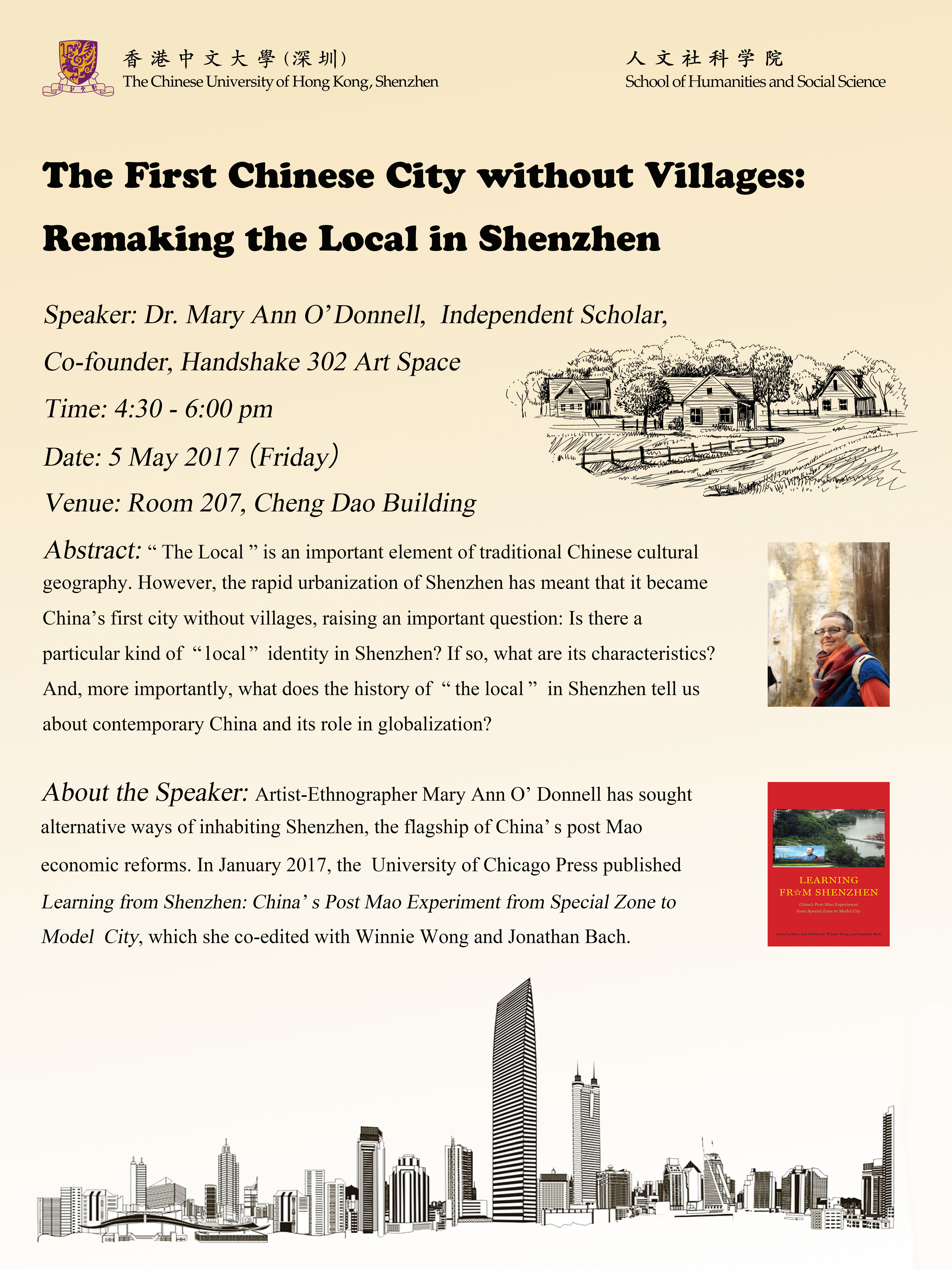The First Chinese City without Villages: Remaking the Local in Shenzhen
Title: The First Chinese City without Villages: Remaking the Local in Shenzhen
Speaker:Dr. Mary Ann O’Donnell
Date: Friday, May 5, 2017
Time: 16:30-18:00
Venue: Room 207, Cheng Dao Building
Language: English
About the Speaker:
Artist-Ethnographer Mary Ann O’Donnell has sought alternative ways of inhabiting Shenzhen, the flagship of China’s post Mao economic reforms. O'Donnell creates and contributes to projects that reconfigure and repurpose shared spaces, where our worlds mingle and collide, sometimes collapse, and often implode. Ongoing projects include her blog, "Shenzhen Noted" and the Handshake 302 Art Space in Baishizhou. In January 2017, the University of Chicago Press published Learning from Shenzhen: China’s Post Mao Experiment from Special Zone to Model City, which she co-edited with Winnie Wong and Jonathan Bach. Her research has been published in positions: east Asian cultures critique, TDR: The Drama Review, and the Hong Kong Journal of Cultural Studies. O'Donnell is currently co-director of the Handshake 302 Art Space in Baishizhou and director of public programs at the P+V Gallery in Dalang.
Abstract:
"The Local (本地)" is an important element of traditional Chinese cultural geography. However, the rapid urbanization of Shenzhen has meant that it became China's first city without villages, raising an important question: Is there a particular kind of "local" identity in Shenzhen? If so, what are its characteristics? And, more importantly, what does the history of "the local" in Shenzhen tell us about contemporary China and its role in globalization?





